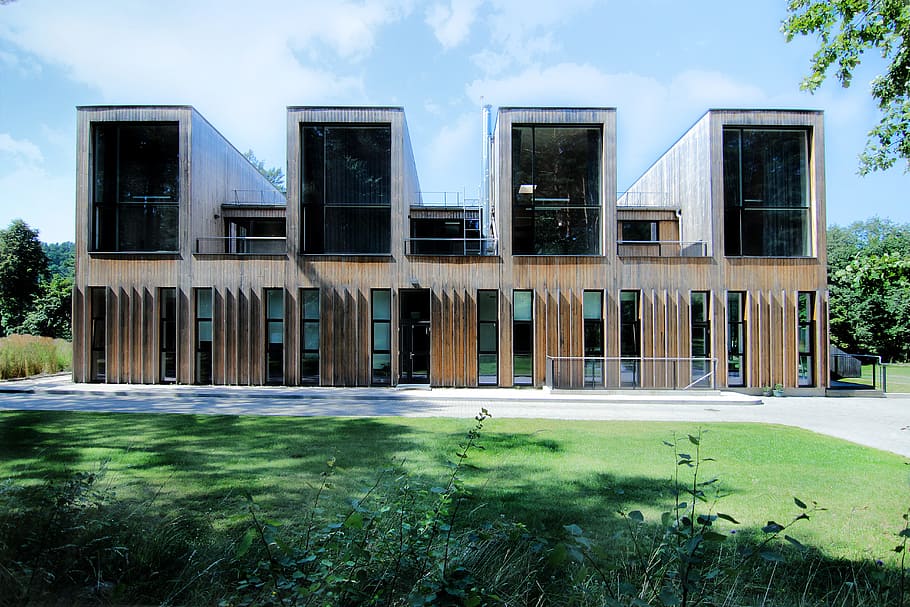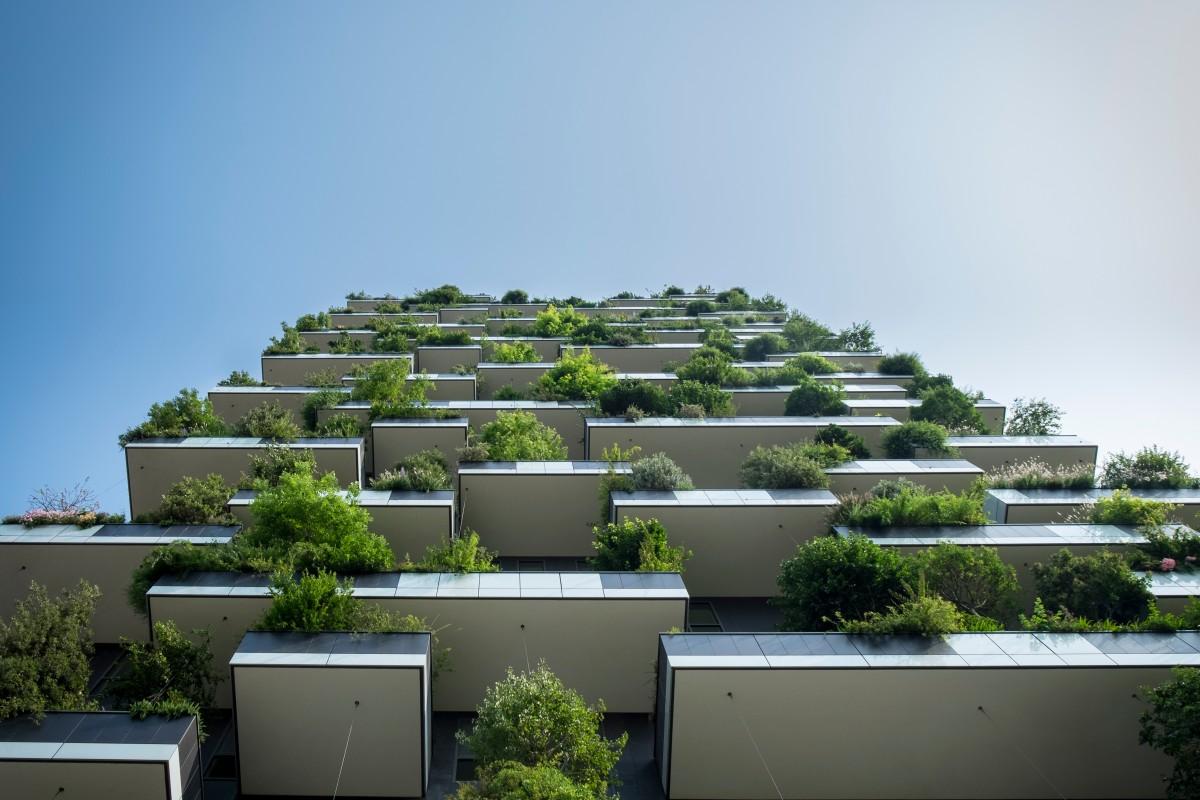
- 1 Comment
- 22,915 views
- JenniferHahnMasterson in Sustainable Fashion

By tradition, interior design is a one-dimensional practice, that is, to provide aesthetic improvements to an interior space. Recently, however, the introduction of the modern global “green movement” caused a dramatic shift in interior design strategies. As society begins to recognize the interconnectivity of buildings, people, community, and the environment, the industry’s trend is now shifting towards providing a healthy, eco-friendly, and sustainable interior space for people to live, work, play, and congregate.

This interest and trend incited the need for environmentally sustainable interior design (ESID). ESID is based on implementing design strategies and principles to provide an indoor environment that is physiologically and psychologically healthy.
ESID Principles
The World Green Building Council revealed that existing building and construction projects that were constructed prior to the ESID trend contributed to 39% of global carbon emission. With a social, economical, and political shift towards the green movement, the race to create new interior spaces or retrofit existing ones with eco-friendly and sustainable interior design is on. Interior designers, therefore, must take special considerations to design such spaces:
Recyclability
According to the latest recycling statistics, overpopulation - and, subsequently, the need to provide shelter to a growing population - means global waste is projected to increase to 70% by 2050. This projection emphasizes the need to rethink the use of materials in creating indoor spaces.
Fortunately, the interior design industry is starting to shift towards sustainable trends such as recycling and repurposing things. For example, creative designers have smartly incorporated the use of antique cupboards, chests, center tables, and other old-fashioned furniture in contemporary settings, creating a unique yet balanced look. Colorful wine bottles can be used as decorations or mobiles. Furniture made of recycled materials such as aluminum or metal are preferred than those made of wood or plastic.
Waste reduction
Cheap or bad-quality furniture, appliances, and decors break down rather quickly. Useless and non-functional, these often end up in landfills, adding to the congestion of landfill space. To improve waste management, interior designers should consider the lifespan of materials they plan to use or acquire. For example, they may opt to use high-quality furniture, appliances, and decors. Such items may have a high initial cost, but their longevity means that they can be used for many years. As such, waste is minimized or even eliminated.
Interior designers should also look at design trends that can withstand changing trends. It’s quite wasteful when clients discard products as soon as they go out of style. Replacing them with ones that “go with the trend” just repeats the cycle. Thus, the “trendy” mindset in interior design philosophy no longer applies when it comes to ESID.
Green lighting
Interior designers know that putting the right furnishings is not enough. The mood of an interior space plays a huge role in accomplishing the required look. Mood is often accomplished by having the right application of lighting. When it comes to the ESID philosophy, green lighting should be incorporated.
In most cases, this simply means using light sources that use less energy. Newer, more eco-friendly lighting technologies such as compact fluorescent lights (CFLs) and light emitting diode (LED) bulbs are great choices. Using energy-efficient lighting systems are simple yet effective and inexpensive ways to bring life to an interior space.

Energy conservation and efficiency
Along with artificial lights, ESID philosophies also ensure efficient energy use all around the entire house. Interior designers may include energy-saving architecture such as large or even wall-sized glass windows and doors to let natural sunlight and warmth in. Venetian blinds allow the property owner to control the amount or direction of natural light. Allowing natural light and warmth reduces the use of artificial lights and heaters, allowing the property owner to enjoy energy savings.
Other than architectural modifications, interior designers might also recommend other ways to save energy. Using curtains and shades, for example, helps keep heat in during the cold months and out during summer months. They might recommend installing carpets, which helps retain around 10% of the ambient heat in the room.
Finally, using modern lamps, appliances, and gadgets all work in concert to keep energy usage down. Modern electronics are engineered in such a way that they’re able to maximize their functionalities using the least amount of electric power.
Minimal environmental impact
Interior designers should always be on the lookout for materials with low environmental impact. Thus, they might recommend rugs made of affordable, natural, and sustainable hemp or jute, which are also good insulators. Trims - and even entire floors - may be made of cork, the harvesting of which doesn’t actually harm trees.
Bamboo paneling is also an eco-friendly solution as bamboo grows very fast; it can be used within 4 to 5 years compared to 60 to 70 years required by most hardwood trees. As the new master’s degree in product and interior design at Raffles Milano teaches, experimenting with different approaches to design is tremendously important, and in doing so, every designer needs to gain knowledge about not only how to design functional and comfy spaces, but also about the environmental economics of products.
Safe and healthy environment
Homes, offices, conference halls, and other interior spaces are abodes of a lot of people at any given time. ESID philosophy states that these dwelling places must be safe and healthy at all times. Thus, interior designers must account green-certified items that do not contribute to indoor air pollution. When picking mattresses, for example, you should ensure that they are CertiPUR-US certified, which means that no heavy metals, pollutants, formaldehyde, and other harmful chemicals are used in their foam material.
The massive environmental awareness that has swept all across the globe is a welcome movement. Individuals, companies, organizations, industries, and governments have adjusted policies and processes in order to save the planet. The interior design industry has joined the green movement. With the proliferation of eco-conscious designers, we’re well on our way of living, working, playing, and congregating in healthy spaces that contribute to the preservation and protection of the environment.




We have placed cookies on your device to help make this website better. You can adjust your cookie settings, otherwise we'll assume you're okay to continue. We use cookies and other tracking technologies to improve your browsing experience on our site, show personalized content, analyze site traffic, and understand where our audience is coming from. To find out more, please read our Privacy Policy. By choosing I Accept, you consent to our use of cookies and other tracking technologies.